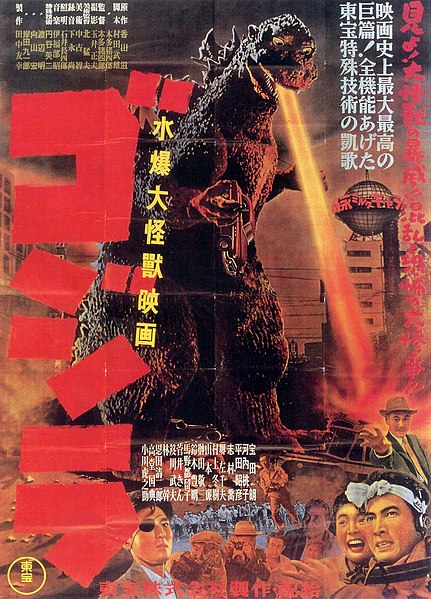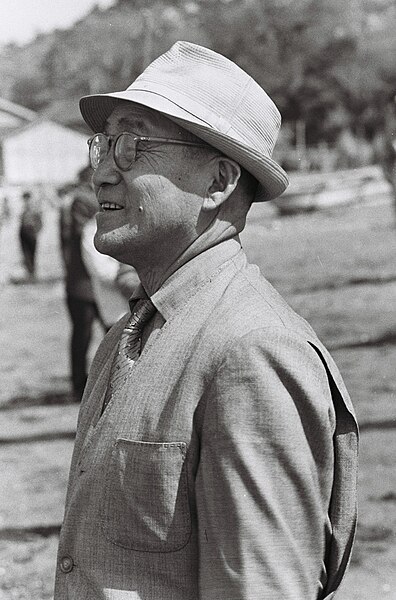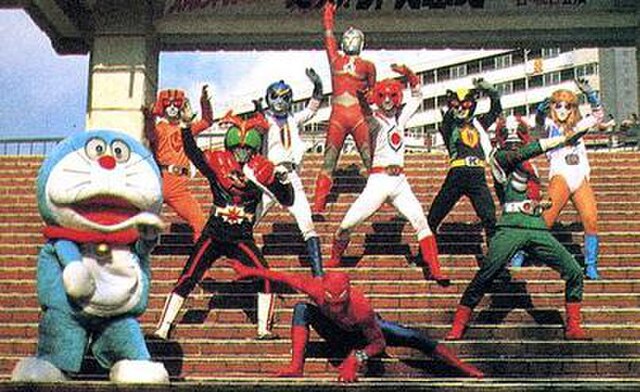Ultraman (1966 TV series)
Ultraman is a Japanese tokusatsu science fiction television series created by Eiji Tsuburaya. Produced by Tsuburaya Productions, it is a follow-up to Ultra Q, though not technically a sequel or spin-off. Tsuburaya Productions produced 39 episodes that aired on Tokyo Broadcasting System (TBS) and its affiliate stations from July 17, 1966, to April 9, 1967. Its premiere topped the average rating set by Ultra Q and kept climbing each week, marking the show as a success. It was also the first Japanese television series to use a bidding system for commercial rights, allowing multiple third-party companies to sponsor the show. This was following TBS's merchandising troubles with its predecessor.
Title card for Ultraman English dub (1966)
Image: Ultraman gyango ruffian from outerspace 19660925
Tokusatsu is a Japanese term for live-action films or television programs that make heavy use of practical special effects. Credited to special effects director Eiji Tsuburaya, tokusatsu mainly refers to science fiction, war, fantasy, or horror media featuring such technology but is also occasionally dubbed a genre itself. Its contemporary use originated in the Japanese mass media around 1958 to explain special effects in an easy-to-understand manner and was popularized during the "first monster boom" (1966-1968). Prior to the monster boom, it was known in Japan as Tokushu gijutsu or shortened Tokugi .
Poster for Godzilla (1954). The techniques developed by Eiji Tsuburaya for Toho continue to be used in the tokusatsu film and television industry.
Eiji Tsuburaya is credited as the creator of Tokusatsu. Photographed by Yoshikatsu Kanno on the Miura Peninsula, Kanagawa Prefecture in March 1960.
Protagonists of the popular tokusatsu franchises mostly of the late 1970s (from back to front, left to right): Ultraman Joneus (Ultra Series), Battle Fever J (Super Sentai), Kamen Rider Stronger and Kamen Rider V3 (Kamen Rider Series), and Spider-Man. The photo also features manga character Doraemon on the far left.





